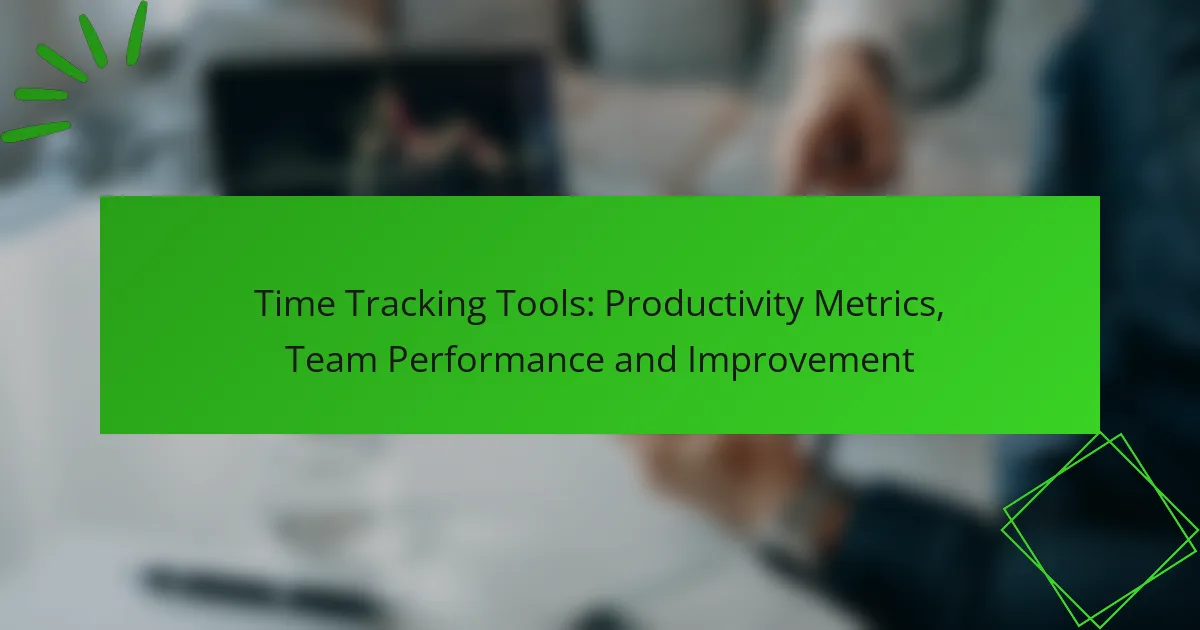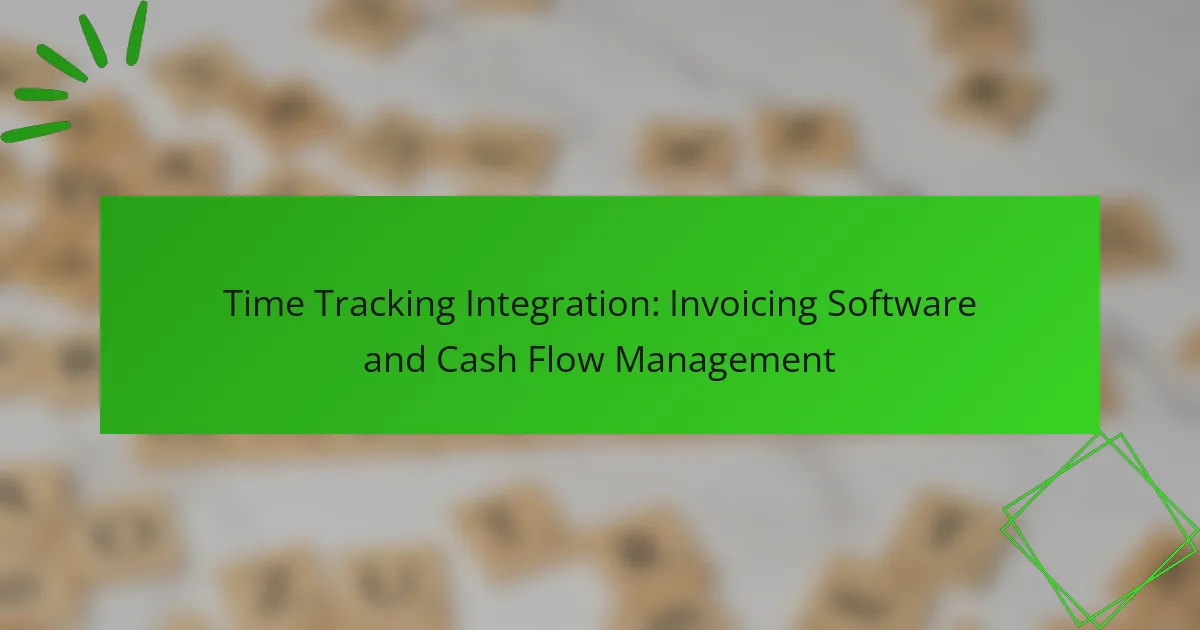Time tracking solutions play a crucial role in helping organizations comply with labor laws and regulations while efficiently managing employee hours. By automating the collection and reporting of work hours, these tools ensure accurate tracking and seamless integration with payroll systems. When evaluating options, it’s essential to consider features such as usability, mobile access, and customization to effectively meet compliance needs and enhance overall business operations.
![]()
What are the best time tracking solutions for compliance in the US?
The best time tracking solutions for compliance in the US include tools that help organizations adhere to labor laws and regulations while efficiently managing employee hours. These solutions often feature robust reporting capabilities, user-friendly interfaces, and integrations with payroll systems to ensure accurate tracking and compliance.
Clockify
Clockify is a popular time tracking tool that offers a free version, making it accessible for small businesses. It allows users to track hours worked, categorize tasks, and generate reports that can assist in compliance with labor regulations.
Key features include project tracking, team management, and integration with various productivity tools. Businesses should ensure that they regularly review reports to maintain compliance with state and federal labor laws.
Toggl Track
Toggl Track is known for its simplicity and ease of use, making it ideal for teams that need to quickly log hours. It offers features like one-click time tracking, detailed reporting, and project management tools that help ensure compliance with labor standards.
Consider using Toggl Track’s reporting features to analyze time spent on different projects, which can help in identifying any compliance issues related to overtime or labor regulations.
Harvest
Harvest combines time tracking with invoicing, making it a great choice for freelancers and small businesses. It provides tools for tracking billable hours and expenses, which is essential for compliance in client billing.
Harvest’s integration with accounting software can streamline payroll processes, ensuring that all tracked hours are accurately reflected in financial records. Regular audits of time entries can help maintain compliance with labor laws.
TimeCamp
TimeCamp offers automatic time tracking and manual entry options, making it versatile for different work styles. Its features include reporting, invoicing, and integrations with project management tools, which can aid in compliance efforts.
Utilizing TimeCamp’s reporting capabilities can help businesses identify trends in employee hours, ensuring adherence to labor regulations regarding overtime and breaks.
Hubstaff
Hubstaff provides time tracking with GPS functionality, making it suitable for remote teams and field workers. It includes features such as productivity monitoring and project management tools, which can support compliance with labor laws.
Employers should regularly review the data collected by Hubstaff to ensure that work hours align with labor regulations, particularly for remote or hourly employees. This proactive approach can help mitigate compliance risks.
![]()
How do time tracking solutions ensure compliance?
Time tracking solutions ensure compliance by automating the collection and reporting of work hours, which helps organizations adhere to labor laws and regulations. These systems often integrate with payroll and HR software to streamline processes and maintain accurate records.
Automated reporting features
Automated reporting features in time tracking solutions provide real-time insights into employee hours, overtime, and attendance. This functionality allows businesses to generate compliance reports quickly, ensuring they meet regulatory requirements without manual effort.
For example, a company may use automated reports to verify that employees are not exceeding the maximum allowable working hours set by local labor laws. This can help avoid potential fines and legal issues.
Integration with payroll systems
Integration with payroll systems is crucial for ensuring that time tracking data is accurately reflected in employee compensation. By linking time tracking solutions directly with payroll software, organizations can minimize errors and streamline payment processes.
For instance, when an employee logs hours in a time tracking tool, those hours can automatically update the payroll system, ensuring timely and accurate wage calculations. This integration also helps maintain compliance with tax regulations by providing clear records of hours worked.
Data security measures
Data security measures are essential in time tracking solutions to protect sensitive employee information. These systems often implement encryption, access controls, and regular audits to safeguard data against unauthorized access and breaches.
Organizations should look for time tracking solutions that comply with data protection regulations, such as GDPR in Europe or CCPA in California. Ensuring that the chosen solution has robust security features can help mitigate risks associated with data leaks and maintain employee trust.
![]()
What features should you evaluate in time tracking solutions?
When evaluating time tracking solutions, focus on features that enhance usability, integration, mobile access, and customization. These elements significantly impact how effectively the software meets your compliance needs and overall business requirements.
Ease of use
Ease of use is crucial for ensuring that employees adopt the time tracking solution without resistance. Look for intuitive interfaces that minimize the learning curve and allow users to track time quickly and efficiently.
Consider features like one-click time entry, clear navigation, and straightforward reporting tools. A user-friendly system can lead to higher compliance rates and more accurate data collection.
Integration capabilities
Integration capabilities determine how well the time tracking solution works with your existing tools, such as payroll systems, project management software, and accounting platforms. Seamless integration reduces manual data entry and the risk of errors.
Check for compatibility with popular software solutions and APIs that allow for custom integrations. This can streamline workflows and enhance overall productivity.
Mobile accessibility
Mobile accessibility allows employees to track their time on-the-go, which is essential for remote or field-based workers. A robust mobile app can facilitate real-time tracking and reduce the likelihood of missed entries.
Evaluate whether the mobile solution offers offline capabilities, notifications, and easy synchronization with the main system. This ensures that time data remains accurate regardless of where employees are working.
Customization options
Customization options enable businesses to tailor the time tracking solution to their specific needs, including unique reporting formats, approval workflows, and user roles. This flexibility can enhance compliance with internal policies and external regulations.
Look for systems that allow you to modify settings easily and adapt features as your business evolves. A customizable solution can better align with your operational requirements and improve user satisfaction.
![]()
What are the pricing models for time tracking solutions?
Time tracking solutions typically offer several pricing models, including subscription-based pricing, freemium models, and one-time purchase options. Each model has its own advantages and considerations that can impact your choice based on your business needs and budget.
Subscription-based pricing
Subscription-based pricing is a common model where users pay a recurring fee, usually monthly or annually, for access to the software. This model often includes regular updates and customer support, making it a convenient choice for businesses looking for ongoing service.
Costs can vary widely, often ranging from around $5 to $30 per user per month, depending on the features included. Consider whether your team will benefit from advanced features like reporting or integrations, as these can influence the subscription tier you choose.
Freemium models
Freemium models allow users to access basic features of the time tracking solution at no cost, with the option to upgrade for more advanced functionalities. This can be a great way to test the software before committing financially.
While the free version may suffice for small teams or simple projects, keep in mind that limitations on features or user numbers might prompt a need to upgrade. Assess your team’s growth and future needs to determine if a freemium model is sustainable long-term.
One-time purchase options
One-time purchase options involve paying a single upfront fee for lifetime access to the software. This model can be appealing for businesses that prefer not to deal with ongoing subscription costs.
However, consider that one-time purchases may not include future updates or customer support, which can lead to additional costs down the line. Ensure that the software meets your long-term needs and check if there are any hidden fees for upgrades or support services.
![]()
What are the common challenges with time tracking compliance?
Time tracking compliance often faces challenges such as user resistance, inaccurate data entry, and the complexity of regulations. These issues can hinder the effectiveness of time tracking systems and lead to non-compliance with labor laws.
User resistance to adoption
User resistance is a significant barrier to effective time tracking compliance. Employees may view time tracking as an invasion of privacy or an unnecessary burden, leading to reluctance in adopting the system.
To address this resistance, organizations should emphasize the benefits of accurate time tracking, such as improved project management and fair compensation. Providing training and support can also help ease the transition and encourage acceptance.
Additionally, involving employees in the selection and implementation of time tracking tools can foster a sense of ownership and reduce pushback. Clear communication about how the data will be used and the protections in place can further alleviate concerns.









